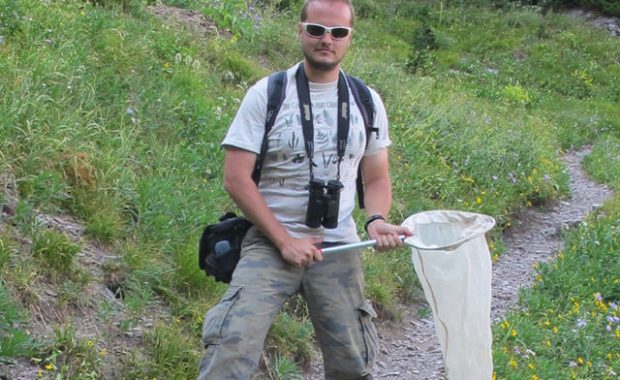Round Lake Centre – For a boy that loved creepy crawlies and things that fly in the night, Round Lake presented the perfect natural setting to grow-up in.
Jason Dombroskie, son of Sandy and Edward and older brother of Scott, looks back fondly on the beginnings of a hobby that seamlessly turned into a career.
Jason began naming his world at an early age, first the trees and then the birds. Turning to moths presented a challenge of approximately 200,000 species and the discovery of which could engage him for a longer time.
“I was always a really geeky kid- into nature,” he confessed.
Family hikes and camping trips were an opportunity to collect different bugs, stored in the margarine containers his mom saved for his hobby.
He began serious collecting at the age of 12.
“Moths are the best option to study and to build a synoptic collection. There are so many types. You set up a light and they come to you,” he enthused.
Sandy recalled the first winter when she declared in no uncertain terms that the collection was not to come into the house.
“I told him the containers must stay outside in the shed. Over that first winter they got blue mold over them. He was so upset that we had to let them into the house,” she admitted.
As Jason became more serious, so too did his strategies for collecting specimens and it wasn’t long before he was collecting live specimens and freezing them in jars.
“For some reason my parents tolerated me using the deep freeze space, to temporarily store moths,” Jason stated.
But not without some comic consequences Sandy relayed, “I was at work when the repair man came to take a look at the freezer and I realized the freezer was full of bugs and I thought I better call him and explain we don’t eat insects,” she said.
Sandy described an extraordinary kid, “He was always reading. He would read the encyclopaedia, the Guinness World Record books. We would go to the library and he would look things up. He never took pen and paper but would remember and then record it all on the computer when we got home.”
Collecting at home was done primarily by the light at the side door of his home in Round Lake.
“During the peak season, on a typical day I would spend about three hours at night pinning specimens; check the outside light about every hour or so, and collect and record what was there until just after midnight. I would check again at 4 a.m. before the birds could get them, then go to sleep for a bit and then head to high school for the day.
I tended to collect things that were new or that I couldn’t identify. This meant more tiny ones, since the larger ones are usually easy to identify and not as diverse. About half the species that I saw were less than one centimetre long and also the most difficult to identify,” he told the Gazette.
I tended to collect things that were new or that I couldn’t identify. This meant more tiny ones, since the larger ones are usually easy to identify and not as diverse. About half the species that I saw were less than one centimetre long and also the most difficult to identify,” he told the Gazette.
Over a 10-year period, Jason collected 5,000 specimens.
“The first moth that I pinned and labelled was the Great Tiger Moth. I probably could have collected another 500 species if I had continued for another 10 years. It was a curiosity and still is – you get surprises all the time,” he admitted.
Jason pointed to his experiences working as a naturalist with Algonquin Park as an advantage and valuable experience.
“I was 16 when Dan Strickland and Ron Tozer hired me and provided excellent mentorship. Although I knew about moths I didn’t have much other knowledge but they saw that I was keen to learn,” he said.
Jason worked seasonally for 10 years.
Story continues in the June 6 issue of The Valley Gazette.
